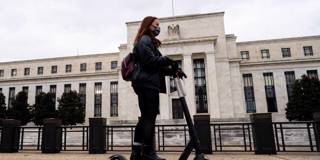With governments in advanced economies continuing to keep the fiscal taps open, it is worth considering whether additional stimulus is really what the situation demands. Unlike the aftermath of the 2008 crisis, the problem today is not a lack of purchasing power, but rather circumstances unique to a viral pandemic.
BRUSSELS – When COVID-19 went global about a year ago, the memory of the 2008 global financial crisis was still fresh, and policymakers pulled every lever at their disposal to maintain financial stability. The reaction to the previous crisis had indeed been somewhat slow and confused, especially in Europe, because no one at the time had ever dealt with anything like it before. But 2020 was different.
In Europe, policymakers intervened on a massive scale, with the European Central Bank expanding its balance sheet from an already high pre-crisis level of €4.7 trillion ($5.7 trillion) to more than €7 trillion – two-thirds of eurozone GDP. At the same time, governments stepped in to support incomes, mostly through expanded short-time work schemes, which preserved employment even as people’s hours on the job plunged.
In the United States, close to 40 million people had lost their jobs by May 2020, but more than half that number soon found new employment opportunities. In the meantime, many availed themselves of unemployment benefits, and many more households received direct cash disbursements from the federal government. As a result, total US personal income has actually increased during the pandemic. Finally, like the ECB, the US Federal Reserve has expanded its balance sheet substantially and maintained a highly accommodative monetary policy.

BRUSSELS – When COVID-19 went global about a year ago, the memory of the 2008 global financial crisis was still fresh, and policymakers pulled every lever at their disposal to maintain financial stability. The reaction to the previous crisis had indeed been somewhat slow and confused, especially in Europe, because no one at the time had ever dealt with anything like it before. But 2020 was different.
In Europe, policymakers intervened on a massive scale, with the European Central Bank expanding its balance sheet from an already high pre-crisis level of €4.7 trillion ($5.7 trillion) to more than €7 trillion – two-thirds of eurozone GDP. At the same time, governments stepped in to support incomes, mostly through expanded short-time work schemes, which preserved employment even as people’s hours on the job plunged.
In the United States, close to 40 million people had lost their jobs by May 2020, but more than half that number soon found new employment opportunities. In the meantime, many availed themselves of unemployment benefits, and many more households received direct cash disbursements from the federal government. As a result, total US personal income has actually increased during the pandemic. Finally, like the ECB, the US Federal Reserve has expanded its balance sheet substantially and maintained a highly accommodative monetary policy.